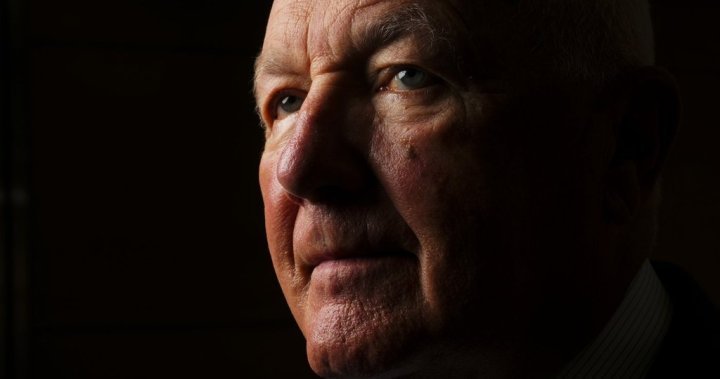The U.S. ambassador to Canada is attentively observing Ottawa’s defense budget preparations but insists that the U.S. won’t impose spending requirements on Canada.
“We have no expectations; it’s not our role to set those,” Ambassador Pete Hoekstra stated during an interview with The Canadian Press last Friday, following NATO defense ministers’ approval of new spending goals.
Hoekstra emphasized that the essence of the NATO alliance is mutual defense against any attack.
He recalled the significant contributions and sacrifices made by Canadian troops in Afghanistan when the U.S. invoked NATO’s collective defense clause.
“Canadian forces were fulfilling their pledge to NATO — when one member is attacked, all members must respond and protect each other,” Hoekstra remarked regarding Canadian soldiers.
Hoekstra did not directly address U.S. President Donald Trump’s comments in March suggesting that Washington might not assist nations that do not adequately invest in their defense and that Canada has been relying on U.S. protection.
He did admit that Canada’s defense spending has been a “point of contention” in U.S.-Canada relations.
Recently, NATO ministers assembled in Brussels to discuss increasing the defense spending target for member nations to as high as five percent of GDP.
Canada has not met NATO’s established defense spending target of two percent since its inception in 2006.
Trump and Prime Minister Mark Carney are engaged in what both parties describe as “intensive” discussions toward a new economic and security agreement that they agreed to pursue after the Canadian election concluded in April.

Get daily National news
Receive the latest news, including political, economic, and current affairs highlights, directly to your inbox daily.
NATO statistics indicate that Canada’s defense spending increased from approximately one percent in 2014 to 1.33 percent in 2023. The annual report from NATO’s secretary-general, released in April, projected Canada’s defense spending to reach 1.45 percent for 2024.
In absolute terms, an analysis from the Canadian Global Affairs Institute last year placed Canada as the seventh highest spender in NATO and the 14th highest worldwide.
Carney committed during the recent election campaign to accelerate Canada’s timeline to achieve the two percent goal from 2032 to 2030 or earlier, but he has not yet outlined a specific strategy to accomplish this.
This will necessitate Canada to inject billions of additional dollars into its defense spending each year.
The prime minister is scheduled to participate in the annual NATO summit starting June 24 in the Netherlands.
Leaders are expected to endorse a new defense investment plan that was developed by defense ministers this week, proposing that member countries invest 3.5 percent of GDP on core defense spending and 1.5 percent on defense-related investments such as infrastructure and resilience.
This proposal arises amid decreasing American commitments and a resurgent Russia.
In recent years, lawmakers from both the Democratic and Republican parties have urged Canada to enhance its Arctic defense, and the previous Biden administration praised much of Ottawa’s Arctic foreign policy outlined last year.
Trump has proposed that Arctic defense is part of his “Golden Dome” initiative for a continental missile defense system. On May 27, he stated that he informed Ottawa it would cost $61 billion to participate in the project.
Hoekstra mentioned that he has not reviewed a detailed cost breakdown but acknowledged that the “really impressive technology” is likely assessed at “a proportionate share of what we believe the Canadian contribution should be.”
Defense Minister David McGuinty indicated that Canada is thoroughly assessing its defense budget and will provide more information about its plans shortly, although the government does not intend to present a budget until fall.
Hoekstra positioned NATO as part of the broader security collaboration between the U.S. and Canada, which also encompasses energy security and combating illegal drugs.
“We need to undertake actions that ensure the safety of our citizens,” Hoekstra stated.
“There are numerous commonalities between Americans and Canadians, and we are optimistic about future cooperation.”
Hoekstra described Trump’s efforts to rectify an unsustainable situation, which he connected to the challenges of undocumented border crossings, excessive government spending, and significant trade deficits.
“The president is enacting changes because it is necessary,” he explained.
Trump’s discussions with Carney will likely encompass significant reforms to border security that the Liberal government introduced in Parliament last week. Hoekstra had not yet reviewed the legislation by Friday.
The ambassador noted that his focus is on mutually beneficial policies for both nations and dismissed the idea of Canada becoming subsumed into the U.S., despite Trump suggesting that it could help Canadians save on costs associated with joining his Golden Dome initiative.
Former Canadian diplomat Colin Robertson remarked that Hoekstra’s ability to deviate from Trump’s statements is limited. Nevertheless, he noted that the ambassador has significant access to the president and that his public statements likely reflect his counsel to Trump.
© 2025 The Canadian Press



